Quick Summary
-
The most persuasive argument for the reconciliation bill's radical policy of 80% "clean electricity" by 2030 is that other countries are already at 80%. But this is BS because those countries, unlike us, can use huge amounts of 1) nuclear, 2) hydro, or 3) imported power.1
-
In response to worries that the reconciliation bill's policy of 80% "clean electricity" by 2030--from 30% today--will cause reliability problems, a group of prominent green electricity advocates recently claimed in an open letter that "reliability can be preserved and enhanced."
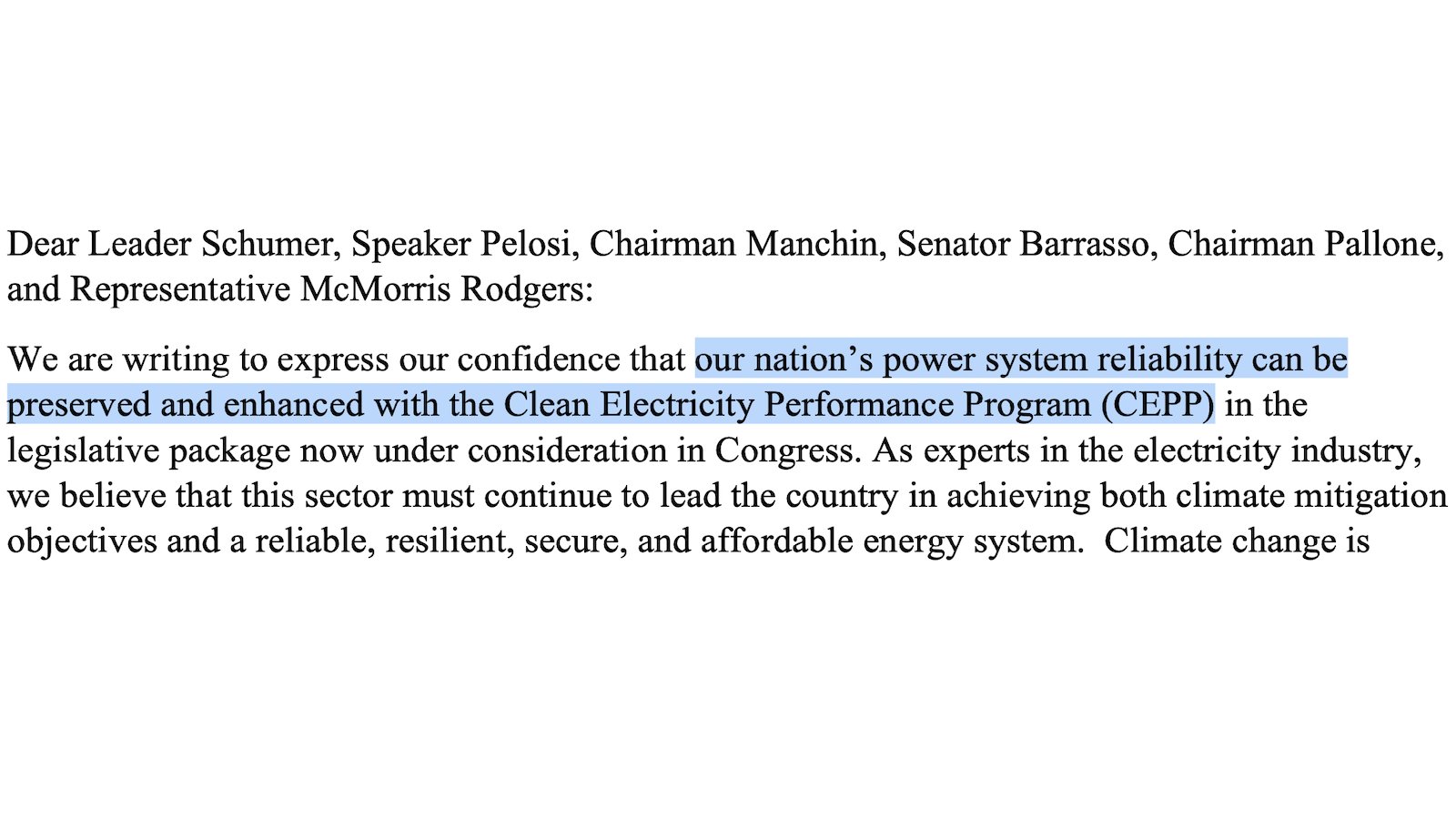
- The most compelling argument given for reliable 80% clean electricity by 2030 is that other places, such as France and Ontario, have already achieved this. But this is a deeply dishonest comparison because those places can, unlike us, use huge amounts of nuclear and hydro.
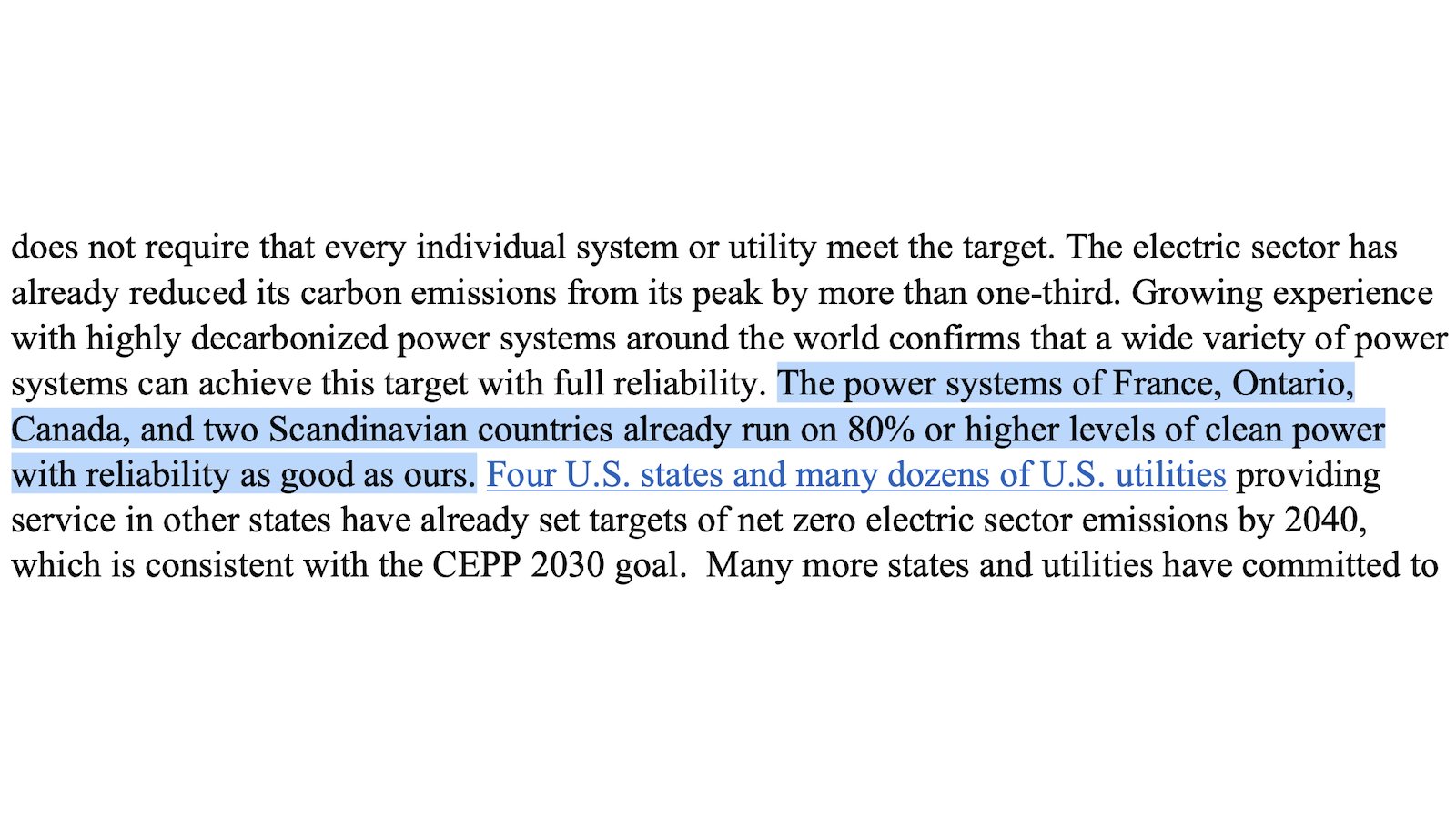
- France gets 2/3 of its electricity from reliable nuclear power. Ontario gets a combined 80% of its electricity from nuclear power and hydropower. By contrast, the US gets 20% of electricity from nuclear and <7% from hydro--neither of which can meaningfully increase by 2030.2
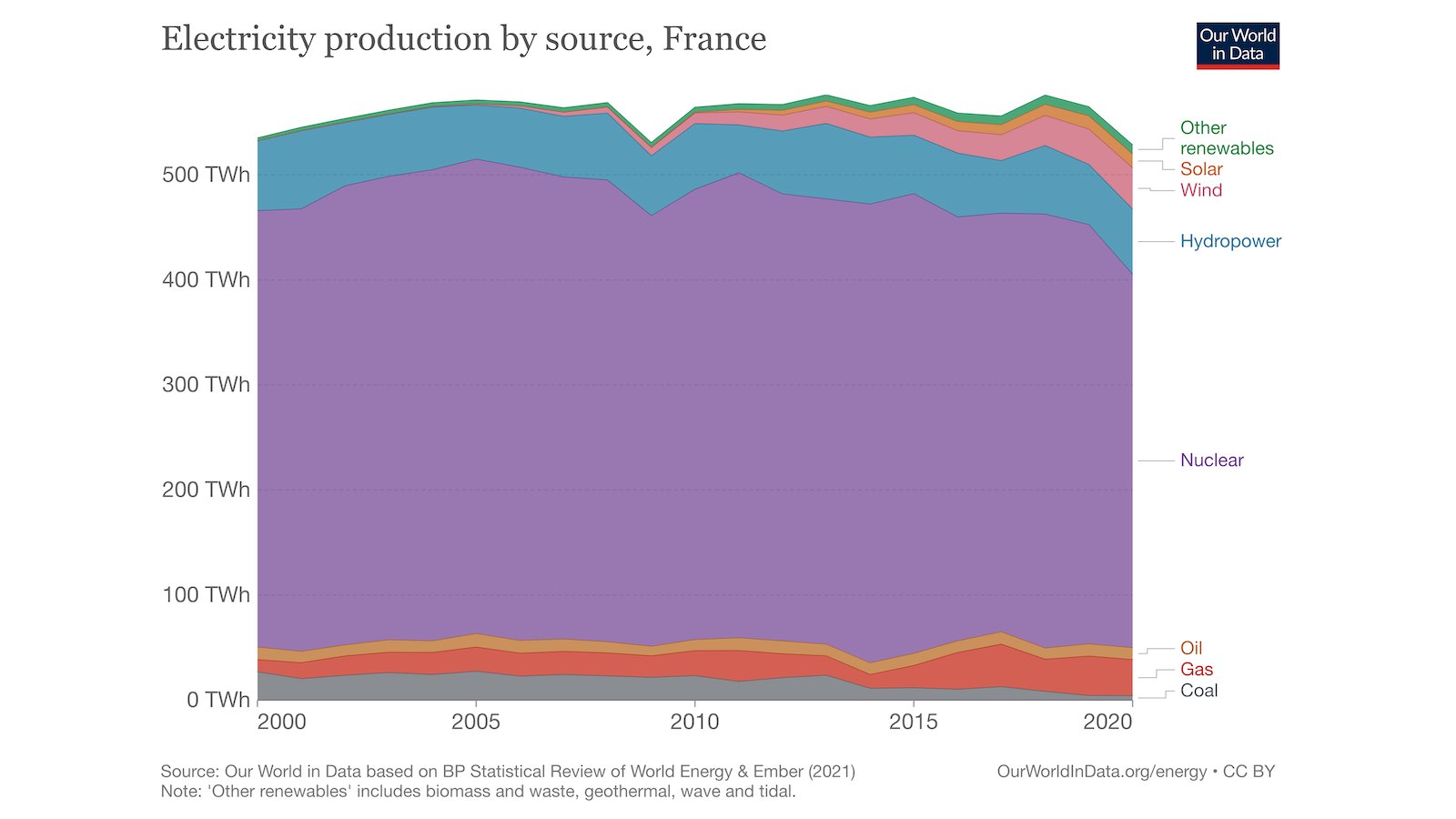
-
Given nuclear and hydro realities in the US, 80% "clean electricity" by 2030 means increasing unreliable solar and wind from 10% of our electricity today to 50% in 8 years! No area of the world has made such a policy work--and all the evidence is that trying will be disastrous.
-
Every area of the world that has tried using significant amounts of unreliable solar and wind has had major cost and/or reliability problems. In the US, we had have had big electricity price increases and huge reliability problems even at 10% solar and wind.3
-
Not only are there high power prices in CA (<20% generated solar+wind), Germany (>33% solar+wind), and Denmark (~50% solar+wind)--but these places would be far worse if not for an ability the US can't have: the ability to import and export huge amounts of electricity.4
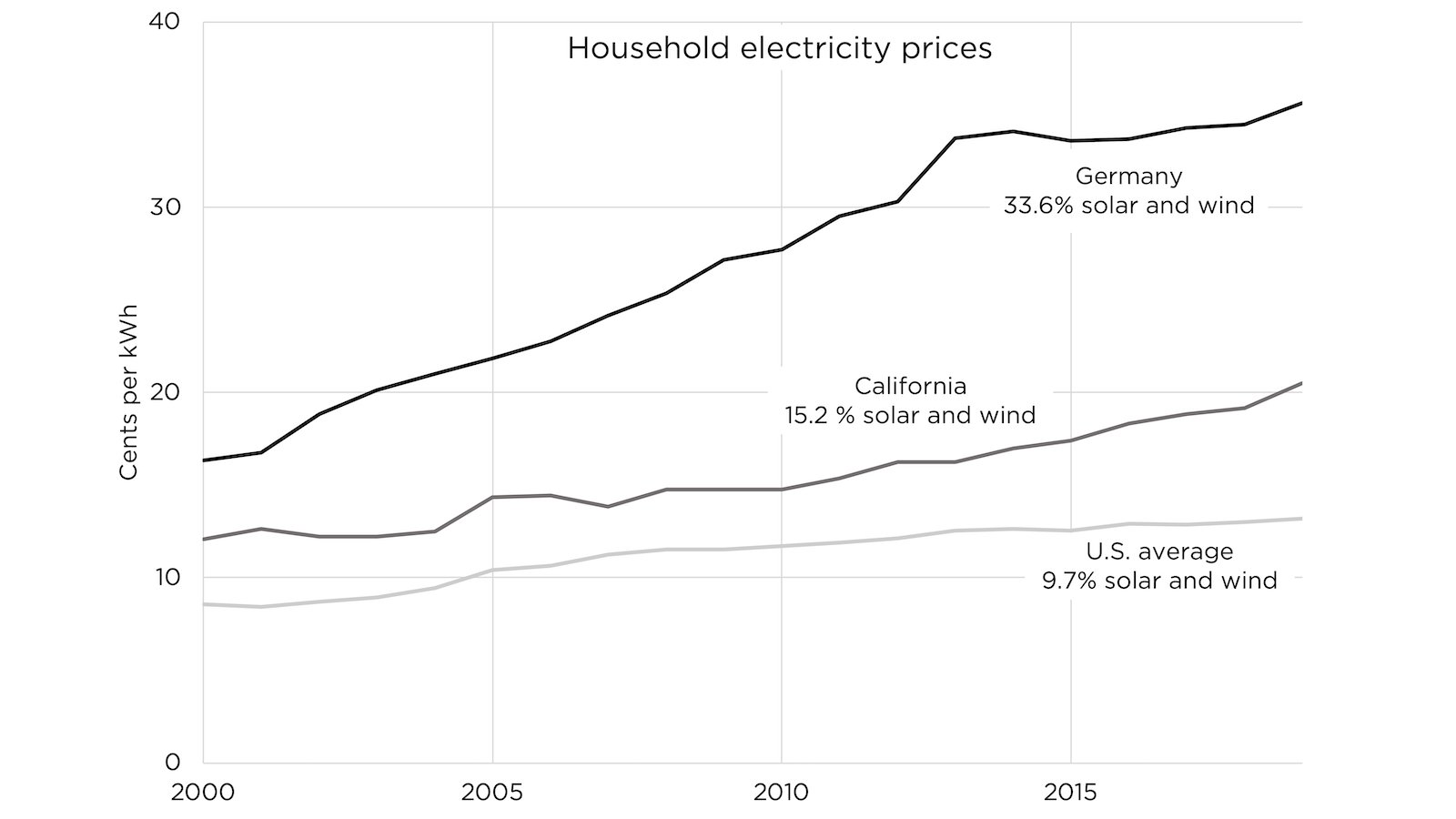
-
Tiny Denmark not only has ultra-expensive electricity, it can only function at all with ~50% solar+wind because it imports power from neighbors when the wind dies down. In 2019 it imported 50% as much power as it generated. Imagine the US trying to do that with Canada and Mexico!5
-
Denmark also depends on large neighbors to be able to handle its excess electricity when there is too much wind for Denmark's electricity needs. In 2019 Denmark exported 30% as much power as it generated. Can Canada and Mexico absorb an erratic 30% of the power we generate?
-
Germans, to get 37% of their electricity from solar+wind, have doubled their prices--now 3X US prices. And they can only get away with 37% because they have neighbors to bail them out when solar/wind fall short. The US as a whole has no such neighbors.6
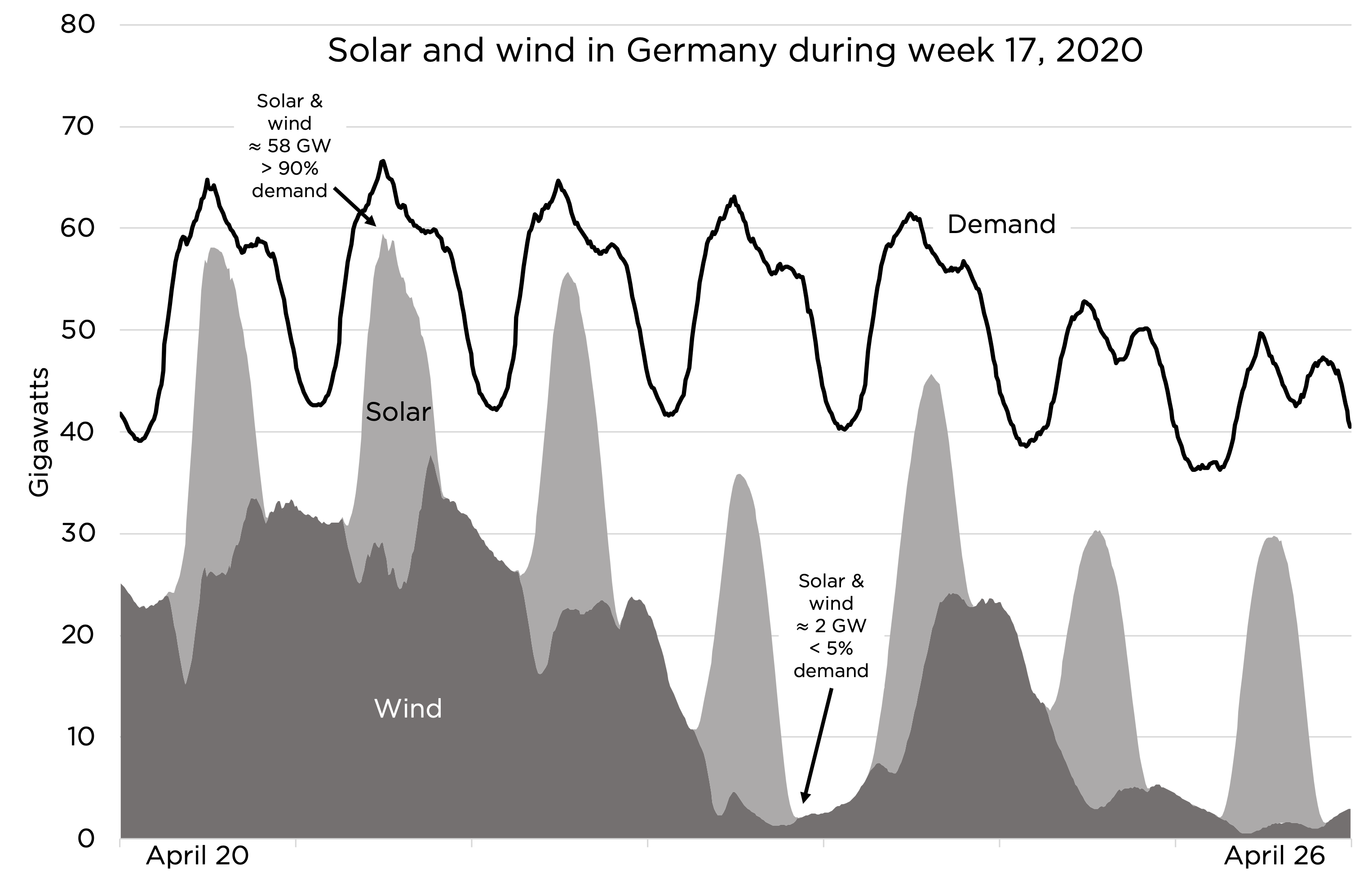
-
Germany is currently starving for more Russian coal and gas, at skyrocketing prices, in expectation of a cold winter and with more nuclear capacity shutdowns looming by end of the year. They're paying the price for listening to solar+wind propagandists.7
-
In California, where I live, we get <20% of our electricity from domestic wind and solar--and we have skyrocketing prices along with disastrous shortages and blackouts. And it would be far worse if we didn't import 30% of our electricity from neighbors.\
Energy Talking Points on California Blackouts
-
There is no place in the world that gets a large share of its electricity from solar and wind without huge imports from its neighbors' reliable--not solar+wind--power plants. And yet the US, which cannot import most of its needed electricity, is considering 50%+ solar and wind!
-
Honest academics would tell Congress that the reconciliation bill's Clean Electricity Performance Program, by subsidizing and mandating 50%+ solar and wind, without the ability to import huge amounts of reliable electricity, is a catastrophic danger to American electricity.
-
Instead, the activist academics writing to reassure Congress about 80% "clean electricity," such as Princeton's Jesse Jenkins, effectively lied to Congress by telling them that we could follow the example of other countries that achieve the number via nuclear, hydro, and imports.
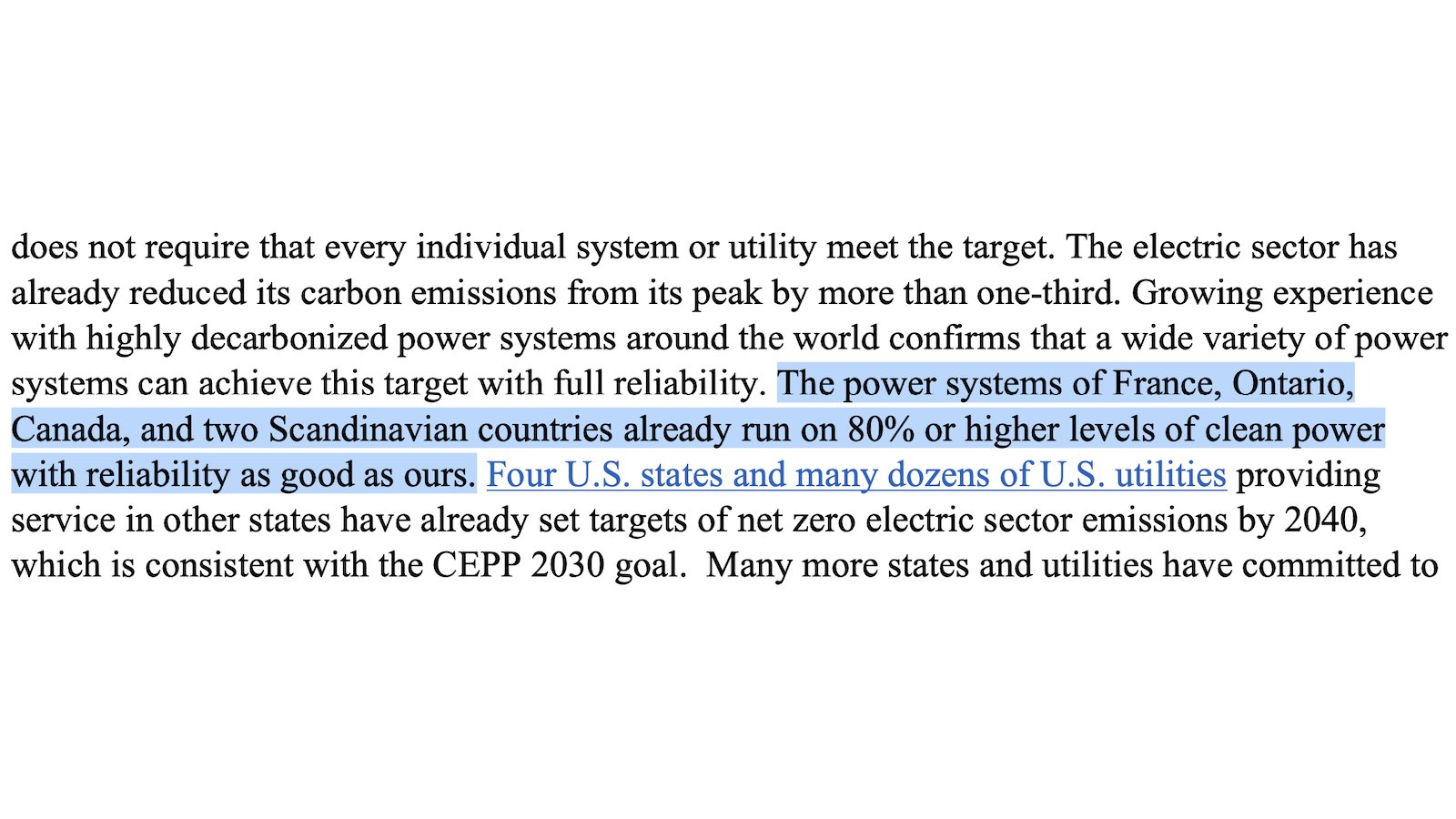
-
In addition to @JesseJenkins, others who effectively lied to Congress in the recent open letter, and should apologize and recant immediately, are @DallasBurtraw, @DrChrisClack, @JeanneMFox, @gogginmichael, @RobGramlichDC, @DianGrueneich, @RicOConnell8, and @DanScripps.
-
All energy journalists who gave credibility to the recent open letter from green electricity advocates, without pointing out the letter's misrepresentation of other countries' electricity use--such as @Ben_Geman of @Axios--should also correct the record.\
Axios - Biden's climate agenda is hanging by a thread
-
Note: The recent "expert" open letter contains many other misrepresentations besides effectively lying about other countries' electricity use--such as denying the huge problems of solar+wind so far and using invalid models riddled with false assumptions.
-
When you hear anyone, including any academic, justify "80% clean electricity" by citing other countries, remember: 1) those countries are depending on huge amounts of nuclear, hydro, and imports (which we can't) and 2) 50%+ unreliable solar and wind means unprecedented disaster.
References
-
Our World in Data - France: Energy Country Profile Ontario Energy Board - Ontario’s System-Wide Electricity Supply Mix: 2020 Data U.S. Energy Information Administration - Electric Power Annual table 3.1.A↩
-
In 2019, the most recent year of “normal” electricity use, US net electricity generation from solar and wind was 9.7% of the total.
U.S. Energy Information Administration - Electric Power AnnualEnergy Talking Points on the Texas Electricity Crisis Energy Talking Points on California Blackouts↩
-
Public generation of electricity was over 488 terawatt-hours in Germany for 2020, solar and wind combined generated over 37%. In 2002 they generated just over 3%.
Fraunhofer ISE energy-charts.deGerman household electricity prices have more than doubled to over 0.3€ per kWh ($0.35 per kWh depending on currency exchange rate) since 2000 when the modern renewable energy law started to massively incentivize solar and wind capacity on the German grid.
BDEW Strompreisanalyse Jul 2021 p. 7The average US household price in 2018 was $0.1301 per kWh.
U.S. Energy Information Administration Electric Power Annual table 5aIncreasingly, Germany depends on interconnections with neighboring countries. In 2020 the country experienced a sharp increase in electricity imports, while still massively exporting solar and wind overproduction.
Reuters - German power export surplus shrank 46.2% in 2020Alex Epstein - Energy Talking Points on California Blackouts↩
-
Public generation of electricity was over 488 terawatt-hours in Germany for 2020, solar and wind combined generated over 37%. In 2002 they generated just over 3%.
Fraunhofer ISE energy-charts.deGerman household electricity prices have more than doubled to over 0.3€ per kWh ($0.35 per kWh depending on currency exchange rate) since 2000 when the modern renewable energy law started to massively incentivize solar and wind capacity on the German grid.
BDEW Strompreisanalyse Jul 2021 p. 7The average US household price in 2018 was $0.1301 per kWh.
U.S. Energy Information Administration Electric Power Annual table 5aIncreasingly, Germany depends on interconnections with neighboring countries. In 2020 the country experienced a sharp increase in electricity imports, while still massively exporting solar and wind overproduction.
Reuters - German power export surplus shrank 46.2% in 2020Alex Epstein - Energy Talking Points on California Blackouts↩
-
Yahoo finance - Europe Turns To Russia For More Coal As Energy Prices Skyrocket↩
